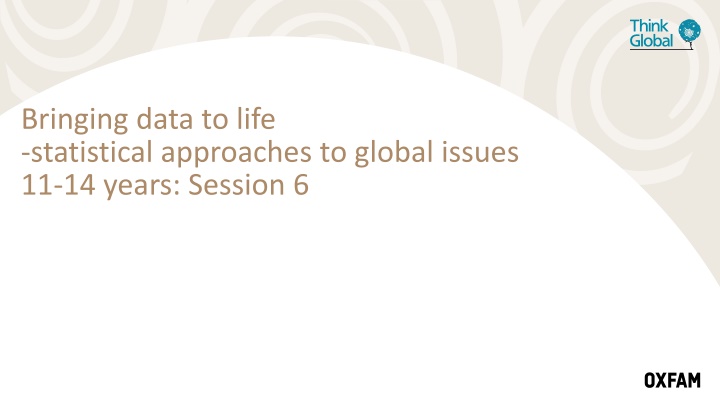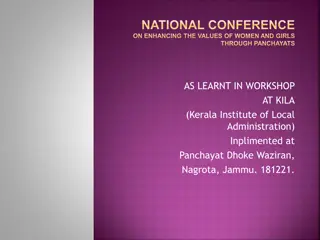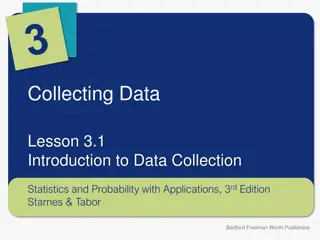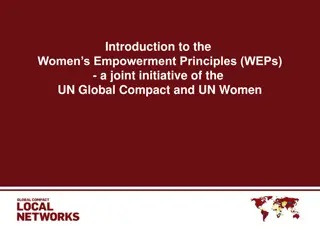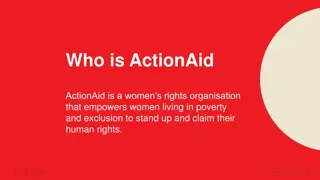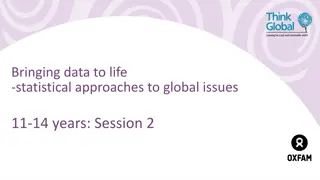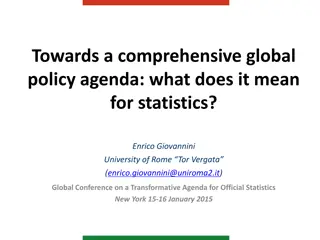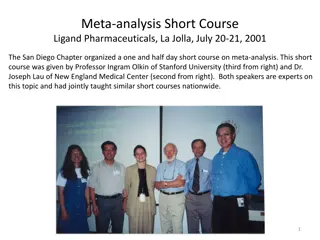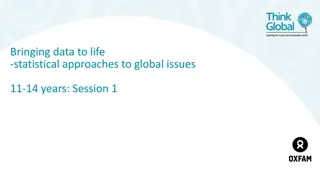Statistical Approaches to Global Issues for Empowering Women
The session explores the impact of collective action groups on women's empowerment, focusing on reducing poverty and increasing decision-making abilities. It discusses the importance of empowering women through skills utilization and participation in decision-making processes. Various dimensions of women's empowerment are analyzed, along with the findings from research on the influence of collective action groups on women's lives in Ethiopia.
Download Presentation

Please find below an Image/Link to download the presentation.
The content on the website is provided AS IS for your information and personal use only. It may not be sold, licensed, or shared on other websites without obtaining consent from the author.If you encounter any issues during the download, it is possible that the publisher has removed the file from their server.
You are allowed to download the files provided on this website for personal or commercial use, subject to the condition that they are used lawfully. All files are the property of their respective owners.
The content on the website is provided AS IS for your information and personal use only. It may not be sold, licensed, or shared on other websites without obtaining consent from the author.
E N D
Presentation Transcript
Bringing data to life -statistical approaches to global issues 11-14 years: Session 6
Were women better off as a result of the collective action groups?
Womens Empowerment The majority of people living in poverty are women. Women's skills, determination, and ideas are greatly under-used resources when it comes to reducing poverty. Women s empowerment is about making the most of these skills so women can take part in decision-making and find paid work. The result of empowering women is to reduce poverty.
Women from a support organisation taking part in Oxfam s research to find out what impact being a member of a collective action group has had on their lives.
Womens Empowerment Index 1. More influence over what happens on farms where the woman works. These farms could be either the family farm or a commercial farm. 2. More say in how the money earned from farming is spent. 3. Owning more money, land, animals and/or equipment. 4. A woman s right to decide what is done with land, animals and farming tools is respected. 5. More influence over borrowing money. 6. More say in how money is spent in the home (everyday needs and bigger purchases). 7. More freedom to travel away from the home. 8. More freedom to attend collective action group meetings.
Questions for Ethiopia chart 1. Do women who are members or non-members of collective action groups fare better in the eight dimensions? 2. In which two dimensions do women who are members of groups fare least well, compared to women not in groups? 3. In which two dimensions are women in Ethiopia the least empowered?
Answers for Ethiopia chart 1. Do women who are members or non-members of collective action groups fare better in the eight dimensions? Generally women who are non-members of groups fare better, in six out of the eight dimensions. 2. In which two dimensions do women who are members of groups fare least well, compared to women not in groups? Freedom of movement and freedom to attend group meetings. 3. In which two dimensions are women in Ethiopia the least empowered? Access to credit and control over household income.
Further questions 1. Which dimensions of empowerment were higher for group members? 2. Which dimensions of empowerment were higher for non-group members? 3. Why do you think these differences exist (between group and non-group)? 4. Based on these graphs, do you think that the women s collective action groups were effective in improving women s empowerment? Why or why not?
To what extent..? To what extent do you agree with the statement collective action groups empowered women farmers ?
Collective action groups had a positive impact on women farmers Agree 50% Agree 25% Agree 75% Agree 0% Agree 100%
Collective action groups had a positive impact on women farmers Agree 50% Agree 25% Agree 75% Agree 0% Agree 100% Not at all Completely Mostly Partially Slightly Whole- heartedly For the most part Somewhat Barely Largely To a certain degree To a small degree Totally With reservations Entirely
To what extent..? To what extent do you agree with the statement collective action groups have a positive impact on women farmers ? Write a response, using the agreement words and drawing on the statements, charts and case studies in your answer.
To what extent do you agree with the statement collective action groups have a positive impact on women farmers ?
Your report Introduction (Explain what collective action groups are and which countries and activities you have studied.) First paragraph (Give some of the evidence that backs-up the statement: What data supports it? What examples from the case studies?) Second paragraph (Give some of the evidence that seems to disprove the statement) Conclusion (Say to what extent you agree, and explain why: What data did you find most compelling? On balance, was there more data supporting or disproving the statement?)
Alternative report structure Introduction (Explain what collective action groups are and which countries and activities you are using to base your answer on.) First paragraph (Explain the data shown in the charts and pick out some examples that support the statement and some that seem to disprove it.) Second paragraph (Choose some of the report findings that support the statement and some that disprove.) Third paragraph (Explain the case study data and pick out some material and/or quotes that support the statement and any that seems to disprove it.) Conclusion (Say to what extent you agree and explain why: What data did you find most compelling? On balance, was there more data supporting or disproving the statement?)
